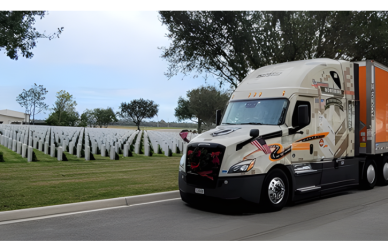Simulators are emerging as a game-changing tool to attract and train the next generation of truck drivers. Not only do they help develop essential skills, but they also appeal to younger individuals who are tech-savvy and eager to join the industry.
Why Simulators?
Simulators offer a realistic driving experience with high-definition graphics and immersive sound. They provide a safe space for both new and seasoned drivers to hone their skills, correct bad habits, and improve fuel efficiency. Russell Hoyt, co-founder of MG Truck Driving School, says, “When we get a driver trained on a simulator, they really understand the basics and fundamentals of driving a truck. It is remarkable that technology can do such things.”
Advanced simulators even replicate emergencies, like jackknifing, allowing drivers to practice critical maneuvers such as controlled driving and emergency braking without the risks of real-life testing. Some models are integrating AI and virtual reality, making training sessions even more authentic.
Engaging Younger Generations
Organizations such as the Nebraska Trucking Association use mobile simulators to engage younger audiences. Kent Grisham, president and CEO, highlights that simulators are pivotal for workforce development, especially in community colleges where many students get their first taste of driving. He notes, “If you want them to practice driving on icy roads, it is much better to practice in a simulator than to take them out in a blizzard.”
UPS’s Innovative Approach
UPS has integrated simulators into its nationwide training programs. According to Tristan Christensen, UPS content development director for U.S. Operations Training, “The UPS driving simulator is built inside an actual UPS package car, which gives the realistic feel of the actual environment.” These truck driving simulators cover aspects from safe driving techniques to high-risk scenarios, ensuring drivers are well-prepared for challenges on the road.
Overcoming Barriers
While simulators are promising, their adoption is limited by cost and space constraints. Fremont Contract Carriers, for instance, acquired their simulator at a bargain during an auction. Tim McCormick, president and CEO, underscores the benefits, explaining, “We thought, ‘Why don’t we assess their skills instead of passing on them?’” This approach has not only broadened their recruitment pool but also enhanced training and skill evaluation.
Moving Forward
Simulators can drastically reduce accident rates—by up to 80%, according to Hoyt—and save on equipment costs by preventing wear and tear. Lowering the cost of these simulators and shifting industry perceptions can promote wider adoption. As Hoyt points out, “It really does make a superior driver.”
Simulators are transforming how trucking companies recruit and train drivers, making the industry safer and more appealing for emerging talents. For companies willing to invest in this technology, the return is not just seen in reduced accidents but also in a stronger, more skilled workforce.
Source: Transport Topics











